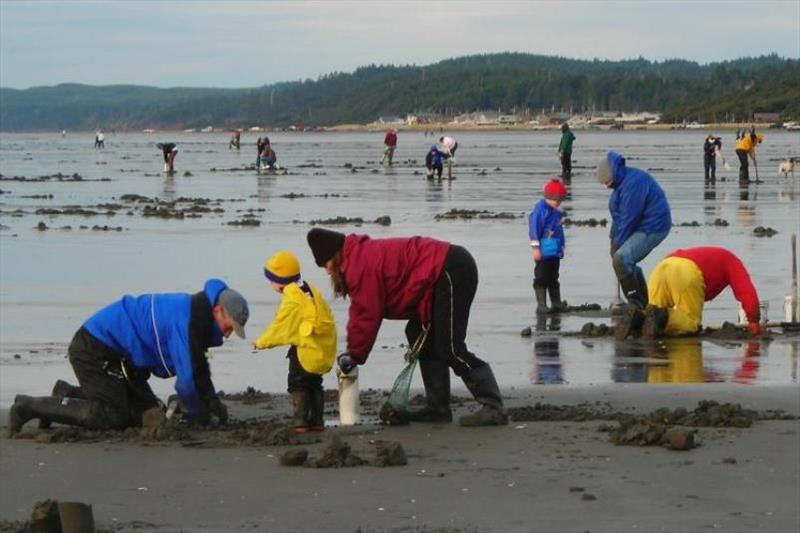
Record marine heatwaves build reservoir of toxic algae off the U.S. West Coast, new study reveals
by NOAA Fisheries 19 Dec 2020 17:44 UTC

Recreational razor clamming can bring thousands of visitors to the Washington coast. Toxins concentrated in razor clam and Dungeness crab fisheries have caused economic damage to coastal communities © NOAA Fisheries
Repeated marine heatwaves off the U.S. West Coast starting about 2013 fueled record harmful algal blooms that seeded a region off Northern California and Southern Oregon with toxic algae, a new study has found.
That reservoir of harmful algae has, in turn, spread across the West Coast and forced the closure of valuable Dungeness crab and other shellfish seasons every year since 2015.
This year, for example, toxic algae have closed Dungeness crab harvest and some clamming in Washington through December.
"We now can see that marine heatwaves have the ability to seed new offshore hotspots, like ocean 'crock pots' where blooms can develop in subsequent years," said Vera Trainer, a research scientist at NOAA Fisheries' Northwest Fisheries Science Center in Seattle and lead author of the new research.
Early warnings
The good news, she said, is that offshore surveys and studies have unraveled the way toxic algae spreads through coastal waters. These data can help fisheries managers anticipate and mitigate the impacts. Scientists share that detailed information through regional bulletins that serve as an early warning system for harmful algal blooms.
That way, managers can focus closures in the most affected areas, for example, while others remain open. Or they can open fisheries earlier before the toxins build up in shellfish. The alert system has reduced the need for coastwide closures with widespread economic impacts.
"The most valuable tool we have is knowledge of how these events develop, so we know where to expect impacts, and which areas remain safe," she said.
Toxic hot spots
NOAA Fisheries research surveys in 2015 first detected signs of a highly toxic "hot spot" of the toxic diatom Pseudo-nitzschia. It spread northward from the coast off Cape Mendocino in northern California to Cape Blanco in southern Oregon. That followed a record-setting marine heatwave that became known as "The Blob" and drove other ecological changes across the West Coast.
Wind-driven currents interact with local underwater topography, leading to the buildup of toxic cells. Pseudo-nitzchia cells can survive in marine sediment for several years. Subsequent surveys from 2016 to 2018 documented the algal hot spot again. Winds associated with storms spread the algae northward along the coast, where they collect in shellfish including clams, mussels, and Dungeness crab.
That shift has forced changes in, or closure of, some of the U.S. West Coast's most valuable commercial and tribal fisheries every year since then.
Some studies have found that climate change may be increasing the odds of marine heatwaves around the world. However, scientists had not anticipated the development of algal hotspots like the one off the West Coast, Trainer said. That highlights the unexpected ecological fallout of climate change. Heatwaves or other events such as El Niño can, in turn, increase the odds and severity of harmful algal blooms.
"This study shows that climate change can influence the occurrence and intensity of some harmful algal blooms by creating new seed beds for their survival and distribution," Trainer said.
This study was supported by:
- A grant from the NOAA National Centers for Coastal Ocean Science's Monitoring and Event Response to Harmful Algal Blooms program
- Northwest Fisheries Science Center
- Funding from the Central and Northern California Ocean Observing System for toxin analysis from the Trinidad Head region
- The Joint Institute for the Study of the Atmosphere and Ocean